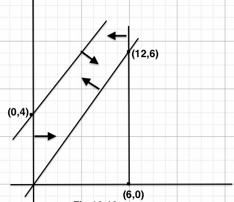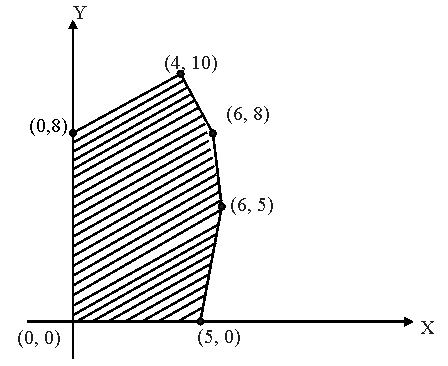Embibe Experts Solutions for Chapter: Linear Programming, Exercise 1: Exercise
Embibe Experts Mathematics Solutions for Exercise - Embibe Experts Solutions for Chapter: Linear Programming, Exercise 1: Exercise
Attempt the practice questions on Chapter 12: Linear Programming, Exercise 1: Exercise with hints and solutions to strengthen your understanding. Mathematics Crash Course (Based on Revised Syllabus - 2023) solutions are prepared by Experienced Embibe Experts.
Questions from Embibe Experts Solutions for Chapter: Linear Programming, Exercise 1: Exercise with Hints & Solutions
The feasible region for an is shown in the figure. Let be the objective function.
The minimum value of is

If the objective function is . Identify the decision variables
A factory uses three different resources for the manufacture of two different products, units of the resource , units of and units of being available. One unit of the first product requires and units of the resources and one unit of the second product requires and units of the resources taken in order. It is known that the first product gives the profit of per unit and the second per unit. Formulate the LPP so as to earn maximum profit.
If the objective function is . Identify the decision variables
A company manufactures and sells two models of lamps and , the profit being and respectively. The process involves two workers and who are available for this kind of work hours and hours per month respectively, assembles in and in minutes. paints in and in minutes. Assuming that all lamps made can be sold, formulate LPP for determining the productions figures for maximum profit.
If the objective function is . Identify the decision variables
The feasible solution for a Linear Programming Problem is shown in Figure. Let be the objective function. Minimum of occurs at

If a man drives his vehicle at , he has to spend . on petrol. If he drives it at a faster speed of . the petrol cost increases to . He has to spend on petrol and travel within hours. How many hours should he move in the given two speeds so as to make the distance travelled maximum? Formulate the problem as an LPP and then solve graphically.
